Globalization and World Cities Research Network
The Globalization and World Cities Research Network, commonly abbreviated to GaWC, is a think tank that studies the relationships between world cities in the context of globalization. It is based in the geography department of Loughborough University in Leicestershire, United Kingdom. GaWC was founded by Peter J. Taylor in 1998.[1] Together with Jon Beaverstock and Richard G. Smith, they create the GaWC's bi-annual categorization of world cities into "Alpha", "Beta" and "Gamma" tiers, based upon their international connectedness.[2]
GaWC city classification
The GaWC examines cities worldwide to narrow them down to a roster of world cities, then ranks these based on their connectivity through four "advanced producer services": accountancy, advertising, banking/finance, and law.[3] The GaWC inventory ranks city economics more heavily than political or cultural factors . Beyond the categories of "Alpha" world cities (with four sub-categories), "Beta" world cities (three sub-categories), and "Gamma" world cities (three sub-categories), the GaWC cities include additional cities at "High sufficiency" and "Sufficiency" level.
GaWC has published city classifications in 1998, 2000, 2004, 2008, 2010, 2012, 2016, 2018 and 2020.[4] The 2004 rankings added several new indicators while continuing to rank city economics more heavily than political or cultural factors. The 2008 roster, similar to the 1998 version, is sorted into categories of Alpha world cities (with four sub-categories), Beta world cities (three sub-categories), Gamma world cities (three sub-categories), and additional cities with High sufficiency or Sufficiency presence.
2020 city classification
The cities in the 2020 classification are as follows.[5]
(![]() 1) or (
1) or (![]() 1) indicates a city moved 1 category up or down since the 2018 classification.[6]
1) indicates a city moved 1 category up or down since the 2018 classification.[6]
Alpha
Alpha level cities are linked to major economic states and regions and into the world economy and are classified into four sections, Alpha ++, Alpha +, Alpha, and Alpha − cities.
Alpha +
Alpha + cities are highly integrated cities, filling advanced service needs:
Alpha
Alpha −
Beta
Beta level cities are cities that link moderate economic regions to the world economy and are classified into three sections, Beta +, Beta, and Beta − cities.
Beta +
Beta
 Abu Dhabi
Abu Dhabi Athens (
Athens ( 1)
1) Cape Town
Cape Town Casablanca
Casablanca Chennai
Chennai Chongqing (
Chongqing ( 1)
1) Denver
Denver Hangzhou (
Hangzhou ( 1)
1) Hanoi (
Hanoi ( 1)
1) Helsinki (
Helsinki ( 1)
1) Ho Chi Minh City (
Ho Chi Minh City ( 1)
1) Karachi
Karachi Kyiv
Kyiv Manama
Manama Montevideo
Montevideo Nairobi
Nairobi Nanjing
Nanjing Oslo
Oslo Panama City (
Panama City ( 1)
1).svg.png.webp) Perth (
Perth ( 1)
1) Philadelphia
Philadelphia Rio de Janeiro
Rio de Janeiro Seattle (
Seattle ( 1)
1) Tianjin
Tianjin
Beta −
 Almaty
Almaty Amman (
Amman ( 2)
2) Austin (
Austin ( 2)
2) Belgrade
Belgrade Bratislava
Bratislava.svg.png.webp) Calgary (
Calgary ( 1)
1)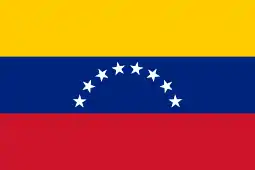 Caracas (
Caracas ( 1)
1) Changsha
Changsha Dalian
Dalian Detroit (
Detroit ( 1)
1) Dhaka
Dhaka Edinburgh
Edinburgh Geneva
Geneva George Town
George Town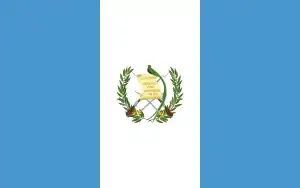 Guatemala City (
Guatemala City ( 1)
1) Hyderabad (
Hyderabad ( 1)
1) Jeddah
Jeddah Jinan
Jinan Kampala
Kampala Kuwait City (
Kuwait City ( 1)
1) Lagos (
Lagos ( 1)
1) Lahore (
Lahore ( 1)
1) Lyon
Lyon Manchester
Manchester Minneapolis (
Minneapolis ( 1)
1) Monterrey
Monterrey Muscat (
Muscat ( 1)
1) Nicosia
Nicosia Osaka (
Osaka ( 1)
1)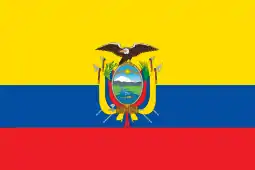 Quito
Quito Saint Petersburg (
Saint Petersburg ( 2)
2) San Diego (
San Diego ( 2)
2)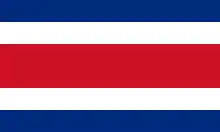 San José
San José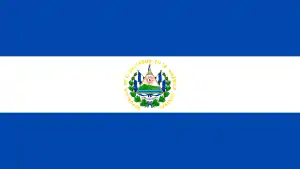 San Salvador
San Salvador Shenyang
Shenyang Sofia (
Sofia ( 1)
1) Stuttgart
Stuttgart Tampa (
Tampa ( 2)
2) Tunis
Tunis Wuhan (
Wuhan ( 1)
1) Xiamen
Xiamen Xi'an (
Xi'an ( 1)
1) Zagreb (
Zagreb ( 1)
1) Zhengzhou (
Zhengzhou ( 1)
1)
Gamma
Gamma level cities are cities that link smaller economic regions into the world economy and are classified into three sections, Gamma +, Gamma, and Gamma − cities.
Gamma +
.svg.png.webp) Adelaide
Adelaide Ahmedabad (
Ahmedabad ( 1)
1) Algiers (
Algiers ( 1)
1).svg.png.webp) Antwerp (
Antwerp ( 1)
1) Baku (
Baku ( 1)
1) Baltimore (
Baltimore ( 1)
1) Belfast (
Belfast ( 1)
1) Charlotte (
Charlotte ( 1)
1) Cologne (
Cologne ( 2)
2)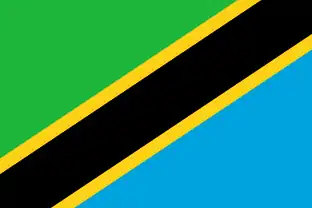 Dar es Salaam
Dar es Salaam Glasgow
Glasgow Guadalajara (
Guadalajara ( 1)
1) Hefei (
Hefei ( 1)
1) Islamabad (
Islamabad ( 1)
1) Kolkata (
Kolkata ( 1)
1) Kunming (
Kunming ( 1)
1) Ljubljana (
Ljubljana ( 1)
1) Medellín (
Medellín ( 2)
2) Orlando (
Orlando ( 2)
2) Phnom Penh (
Phnom Penh ( 2)
2) Phoenix (
Phoenix ( 1)
1) Porto (
Porto ( 1)
1) Pune
Pune Qingdao (
Qingdao ( 1)
1) Riga
Riga Rotterdam
Rotterdam San Jose (
San Jose ( 1)
1) St. Louis (
St. Louis ( 1)
1) Suzhou (
Suzhou ( 1)
1) Tbilisi (
Tbilisi ( 1)
1)
Gamma
Gamma −
 Accra (
Accra ( 2)
2) Asunción (
Asunción ( 1)
1) Belo Horizonte
Belo Horizonte Bilbao (
Bilbao ( 1)
1) Cleveland (
Cleveland ( 2)
2) Columbus (
Columbus ( 2)
2) Douala (
Douala ( 1)
1).svg.png.webp) Edmonton (
Edmonton ( 1)
1) Fuzhou
Fuzhou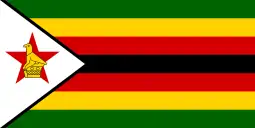 Harare (
Harare ( 2)
2) Harbin (
Harbin ( 2)
2) Kaohsiung (
Kaohsiung ( 1)
1) Kansas City (
Kansas City ( 1)
1) Katowice (
Katowice ( 2)
2) Lausanne (
Lausanne ( 1)
1) Limassol (
Limassol ( 2)
2) Luanda (
Luanda ( 1)
1) Málaga (
Málaga ( 2)
2) Maputo
Maputo Milwaukee
Milwaukee Nagoya (
Nagoya ( 2)
2) Nassau (
Nassau ( 1)
1) Port Louis (
Port Louis ( 3)
3) Penang
Penang Poznań
Poznań Querétaro (
Querétaro ( 1)
1) Sacramento
Sacramento Salt Lake City (
Salt Lake City ( 2)
2) Taiyuan (
Taiyuan ( 1)
1)
Sufficiency
Sufficiency level cities are cities that have a sufficient degree of services so as not to be overly dependent on world cities. This is sorted into High Sufficiency cities and Sufficiency cities.
High Sufficiency
 Abidjan
Abidjan Abuja
Abuja Birmingham (
Birmingham ( 4)
4) Brasília (
Brasília ( 1)
1) Cincinnati (
Cincinnati ( 1)
1) Curitiba (
Curitiba ( 1)
1) Dammam (
Dammam ( 1)
1) Hartford
Hartford Indianapolis (
Indianapolis ( 1)
1) Johor Bahru (
Johor Bahru ( 1)
1) Kraków (
Kraków ( 1)
1) Leeds
Leeds Lusaka (
Lusaka ( 2)
2) Macau (
Macau ( 1)
1) Ningbo
Ningbo Porto Alegre
Porto Alegre Port of Spain (
Port of Spain ( 1)
1) Puebla (
Puebla ( 1)
1) Raleigh
Raleigh San Antonio (
San Antonio ( 1)
1) Seville (
Seville ( 1)
1) Strasbourg (
Strasbourg ( 1)
1) The Hague (
The Hague ( 1)
1) Tijuana (
Tijuana ( 1)
1) Ulaanbaatar (
Ulaanbaatar ( 1)
1) Yangon (
Yangon ( 1)
1) Yerevan (
Yerevan ( 1)
1)
Sufficiency
 Aarhus
Aarhus Aberdeen
Aberdeen Aguascalientes City
Aguascalientes City Alexandria
Alexandria Baghdad
Baghdad Bandar Seri Begawan
Bandar Seri Begawan Barranquilla
Barranquilla Basel
Basel Bergen
Bergen Bern[lower-roman 1]
Bern[lower-roman 1] Birmingham
Birmingham Bishkek[lower-roman 1]
Bishkek[lower-roman 1] Blantyre
Blantyre Bologna
Bologna Bordeaux
Bordeaux Brazzaville[lower-roman 1]
Brazzaville[lower-roman 1] Bremen
Bremen Buffalo
Buffalo Bursa
Bursa Busan[lower-roman 1]
Busan[lower-roman 1] Cali
Cali Campinas
Campinas.svg.png.webp) Canberra
Canberra Cardiff
Cardiff Cebu City
Cebu City Changchun
Changchun Chihuahua[lower-roman 1]
Chihuahua[lower-roman 1] Chișinău
Chișinău Christchurch
Christchurch Ciudad Juárez
Ciudad Juárez Córdoba
Córdoba Des Moines
Des Moines Dortmund
Dortmund Dresden
Dresden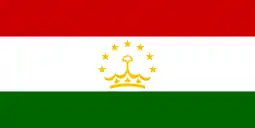 Dushanbe
Dushanbe Essen[lower-roman 1]
Essen[lower-roman 1] Florence (
Florence ( 1)
1) Fukuoka
Fukuoka Gaborone (
Gaborone ( 1)
1) Genoa
Genoa Goiânia
Goiânia Graz
Graz Grenoble
Grenoble Guiyang
Guiyang Haifa[lower-roman 1]
Haifa[lower-roman 1].svg.png.webp) Halifax
Halifax Hamilton
Hamilton Hanover
Hanover Harrisburg[lower-roman 1]
Harrisburg[lower-roman 1].svg.png.webp) Hobart[lower-roman 1]
Hobart[lower-roman 1] Hohhot
Hohhot Honolulu[lower-roman 1]
Honolulu[lower-roman 1] Hsinchu[lower-roman 1]
Hsinchu[lower-roman 1] İzmir (
İzmir ( 1)
1) Jacksonville
Jacksonville Jerusalem
Jerusalem Kabul
Kabul Kazan
Kazan Kigali
Kigali Kingston
Kingston Kinshasa
Kinshasa Kobe[lower-roman 1]
Kobe[lower-roman 1] Kochi
Kochi Kyoto[lower-roman 1]
Kyoto[lower-roman 1] Labuan (
Labuan ( 1)
1) Lanzhou
Lanzhou Las Vegas (
Las Vegas ( 1)
1) Leipzig
Leipzig León
León Libreville
Libreville.svg.png.webp) Liège
Liège Lille
Lille Linz
Linz Liverpool
Liverpool Łódź
Łódź Lomé[lower-roman 1]
Lomé[lower-roman 1] Louisville
Louisville Malacca[lower-roman 1]
Malacca[lower-roman 1] Mannheim[lower-roman 1]
Mannheim[lower-roman 1] Marseille
Marseille Memphis
Memphis Mérida
Mérida Mexicali
Mexicali Minsk (
Minsk ( 2)
2) Montpellier
Montpellier Nanchang
Nanchang Nanning
Nanning Naples
Naples New Orleans
New Orleans Newcastle upon Tyne
Newcastle upon Tyne Nice
Nice Nottingham
Nottingham Novosibirsk
Novosibirsk Nur-Sultan
Nur-Sultan Nuremberg
Nuremberg Oklahoma City
Oklahoma City Omaha[lower-roman 1]
Omaha[lower-roman 1] Palermo[lower-roman 1]
Palermo[lower-roman 1] Palo Alto
Palo Alto Pittsburgh
Pittsburgh Podgorica
Podgorica Port Elizabeth
Port Elizabeth Port Harcourt
Port Harcourt Portland
Portland Port Moresby[lower-roman 1]
Port Moresby[lower-roman 1] Pretoria
Pretoria.svg.png.webp) Quebec City
Quebec City Recife
Recife Reykjavík
Reykjavík Richmond
Richmond Rochester
Rochester Rosario
Rosario Salvador[lower-roman 1]
Salvador[lower-roman 1] San Luis Potosí City
San Luis Potosí City San Pedro Sula
San Pedro Sula Sanaa
Sanaa Santa Cruz de la Sierra
Santa Cruz de la Sierra Sapporo[lower-roman 1]
Sapporo[lower-roman 1] Sarajevo
Sarajevo.svg.png.webp) Saskatoon[lower-roman 1]
Saskatoon[lower-roman 1] Sendai[lower-roman 1]
Sendai[lower-roman 1] Sheffield[lower-roman 1]
Sheffield[lower-roman 1] Shijiazhuang
Shijiazhuang Skopje (
Skopje ( 1)
1) Southampton (
Southampton ( 1)
1) Surabaya (
Surabaya ( 1)
1) Suva[lower-roman 1]
Suva[lower-roman 1] Tainan[lower-roman 1]
Tainan[lower-roman 1] Tallinn (
Tallinn ( 3)
3) Tashkent
Tashkent Toulouse
Toulouse Trieste
Trieste Tulsa
Tulsa Ürümqi
Ürümqi Utrecht
Utrecht Valencia
Valencia Valparaíso
Valparaíso Vientiane
Vientiane Windhoek
Windhoek.svg.png.webp) Winnipeg
Winnipeg Wuxi
Wuxi Yokohama[lower-roman 1]
Yokohama[lower-roman 1] Zhuhai
Zhuhai
No longer classified
The following cities were included in the 2018 edition, but not in the 2020 edition:
See also
Notes
- Added in the 2020 edition of the classification.
References
- Taylor, Peter J. (2004). World city network: a global urban analysis. Routledge. p. ix. ISBN 0-415-30249-8. Retrieved 2010-10-10.
- Donald, Stephanie; Gammack, John G. (2007). Tourism and the branded city. London: Ashgate Publishing. p. 23. ISBN 0-7546-4829-X. Retrieved 2010-10-10.
- "GaWC City Link Classification 2018". Lboro.ac.uk. 13 November 2018. Retrieved 7 August 2019.
- "The World According to GaWC". GaWC - Research Network. Retrieved 20 December 2020.
- "The World According to GaWC 2020". GaWC - Research Network. Globalization and World Cities. Retrieved 26 August 2020.
- "The World According to GaWC 2018". GaWC - Research Network. Globalization and World Cities. Retrieved 28 December 2020.
